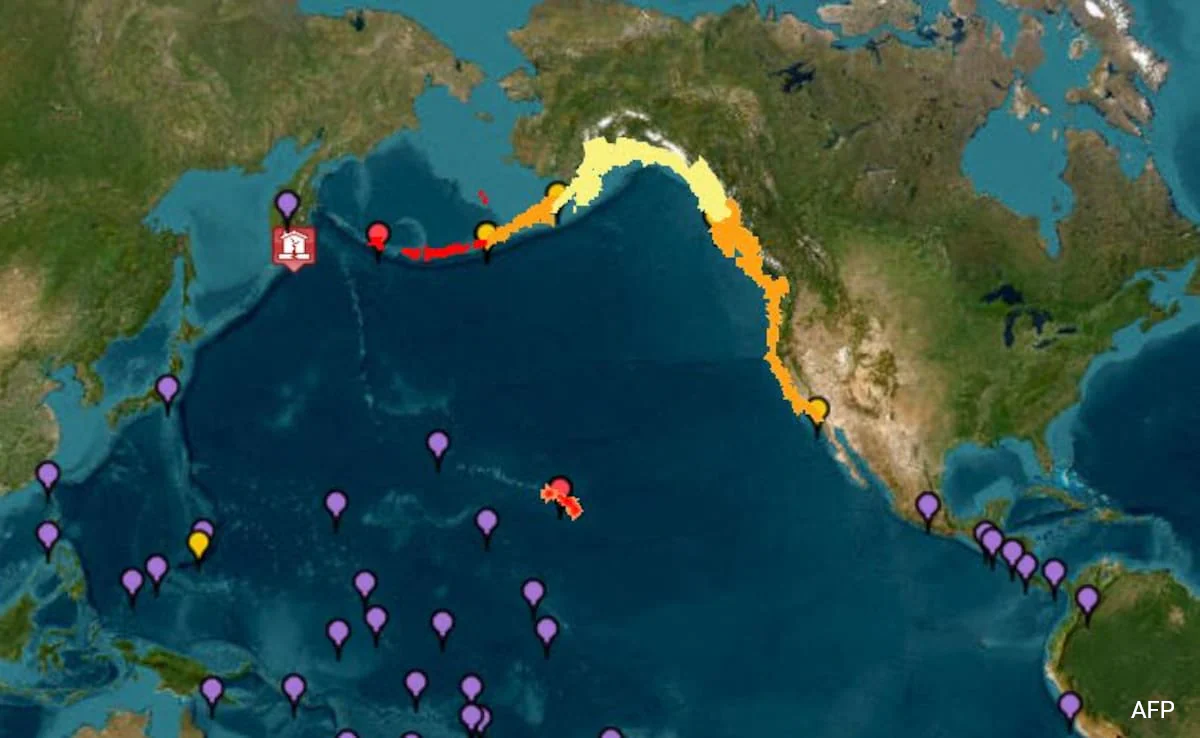
Tsunami Hits Russia – A Catastrophic Seismic Event Shaking Kamchatka
On a seemingly tranquil day in Russia’s Far East, the seismic landscape of Kamchatka dramatically transformed as a powerful earthquake with a magnitude of 8.8 struck the region, triggering a significant tsunami that impacted the coastal communities. This natural disaster was one of the most intense seismic events recorded in recent years, and the subsequent waves brought widespread alarm and destruction to the area.
The Magnitude and Immediate Impact of the Earthquake
The earthquake, which struck with an epicenter in the northern Pacific Ocean near the Kamchatka Peninsula, was felt strongly across the region and even beyond. Seismologists classify this event as one of the top-tier earthquakes, and its power was evident through the waves it generated. Reports from various sources, including first visuals, we understand the scale of this seismic release.
The earthquake’s strength was felt not just in the immediate vicinity but also triggered widespread alarm across neighboring regions, prompting immediate emergency responses and preparations for a possible tsunami. Such powerful earthquakes can have profound impacts on the landscape, ecosystems, and local communities, often causing both immediate destruction and long-term recovery efforts.
The Tsunami Alert and Wave Impact
Waves Reaching Up to 4 Metres
Following the seismic disturbance, authorities promptly issued tsunami warnings to coastal zones. According to reports, the waves recorded as high as 4 metres in some areas, causing concern for residents and authorities alike. The impact of these waves was devastating in some regions, with coastal infrastructure severely affected and communities evacuated in anticipation of further surges.
The Videos capturing the moment of the earthquake reveal the raw power of nature and the immediate chaos caused by the waves.
Widespread Response and Evacuations
- Urgent evacuations were carried out along the Kamchatka coast, with residents rushing to higher ground to escape the rising water levels.
- Authorities activated tsunami warning systems that stretched from Japan to the US, providing crucial alerts to millions of coastal inhabitants.
- Despite initial fears, the tsunami’s impact was localized, but it served as a stark reminder of the region’s vulnerability to such natural calamities.
Despite the warnings, some areas still faced the brunt of the waves, with boats capsizing and property damage reported. Emergency crews and military personnel were deployed to assist in rescue and relief efforts, highlighting the seriousness of the threat and the need for robust disaster preparedness in a seismically active zone like Kamchatka.
Emergency Responses and Scientific Insight
Seismologists and meteorological agencies closely monitored the situation, providing updates and forecasts throughout the crisis. The data collected from this earthquake and ensuing tsunami will play a pivotal role in understanding earthquake mechanics in subduction zones, which are common in the Pacific Ring of Fire.
Officials emphasized preparedness, encouraging coastal communities to adopt better emergency protocols. The event underscores the importance of early warning systems and community awareness in reducing casualties and property damage in future events.
Global Perspective on Tsunami Risks
This incident is a part of a broader pattern of seismic activity impacting the Pacific basin, with warnings issued for regions stretching from East Asia to North America. The Pacific tsunami alerts indicate the interconnected nature of seismic events and their potential for widespread influence. Experts stress that preparedness is key, especially in regions with high tectonic activity, like Kamchatka, which is perched atop one of the most volatile subduction zones in the world.
What We Know About the Current Warnings
- Waves of up to 4 metres were recorded along parts of Kamchatka’s coast, with some remote areas experiencing more significant surges.
- The tsunami alert stretched from Japan through Alaska, emphasizing the scale of potential disaster.
- Authorities are working with international agencies to monitor ongoing oceanic activity and provide timely updates.
- Despite the immediate danger, no significant casualties or widespread destruction have been reported so far, thanks to prompt warnings and evacuations.
- Scientists continue to analyze seismic data to better understand the earthquake’s mechanics and improve early warning response systems.
The recent event vividly illustrates that despite advances in technology and preparedness, nature’s power remains formidable and unpredictable. The Kamchatka disaster serves as a wake-up call for authorities worldwide to enhance their resilience against similar natural calamities.
Conclusion: A Call for Vigilance and Preparedness
In the aftermath of this powerful earthquake and subsequent tsunami, it is evident that continuous vigilance, investment in early-warning infrastructure, and community education are critical. While Kamchatka has historically been a seismic hotspot, each event offers lessons for better disaster management and risk mitigation.
As climate and geophysical changes continue to influence our planet, the frequency and intensity of such natural events may increase. Preparing for these inevitable challenges is not just a matter of governmental policy but a collective responsibility of all individuals living in vulnerable regions.
Understanding the science behind earthquakes and tsunamis helps demystify these phenomena and underscores the importance of international cooperation in managing natural disasters. The Kamchatka incident underscores that while we cannot prevent earthquakes, we can certainly improve our ability to respond efficiently and save lives.
Final Note
For more updated news please keep visiting Prime News World.








